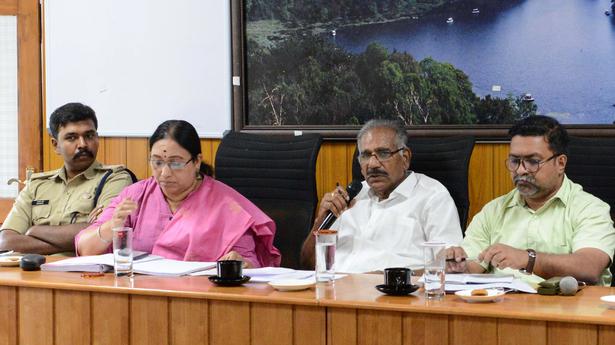Although Kerala is blessed with pristine beaches as well as backwaters, the pressure of growing tourism is largely on its sprawling hill stations.
Kerala Tourism has made big strides by riding high on the growing domestic tourism. In 2024, the domestic tourism across the State has set a new record of 2.22 crore. However, the statistics available with the Forests department reveal that around one-third of the tourists who visit various scenic locations in Kerala flock to sensitive ecotourism centres, mostly situated in the hills in protected forests.
In 2024, 80 ecotourism centres in protected areas under the Forest department were visited by around 72 lakh tourists, chiefly domestic tourists, whereas it was 68.68 lakh in 2023 and 56.37 lakh in 2022. This clearly shows the growing preference for the hill stations by the domestic tourists, despite the State having a heady blend of beaches along the unexploited 580 km-long coastline, backwaters, and a slew of other attractions.
Speaking to The Hindu, N. Badusha, president of the Wayanad Prakruthi Samrakshana Samiti (WPSS), said all of the ecotourism centres in the hills are situated at the core of the protected areas of the forests. No detailed scientific studies were carried out by any of the agencies to fix the number of vehicles and tourists to be allowed in the environmentally fragile regions, he said.
The ecotourism centres in Wayanad, one of the most ecologically vulnerable regions in the State, were closed for about two and a half years after the WPSS challenged the Forests department’s decision to allow an uncontrolled number of tourists in these centres in Kerala High Court. Although these were reopened recently, the authorities have imposed restrictions on the number of visitors allowed in the region at any given time.
After a public outcry, the department has assessed the carrying capacity of 18 ecotourism destinations and selected an agency to determine the maximum number of people to be allowed in other selected ecotourism destinations, including assessing the physical carrying capacity, real carrying capacity and effective carrying capacity as per the Guidelines for ecotourism in and around protected areas issued by the Ministry of Environment, Forests and Climate Change in June 2011. The process to carry out the safety audit and destination audit is under way at many ecotourism centres.
The tourism bodies are of the view that uncontrolled ‘mass tourism’ will not benefit the tourism industry or the local economy. Instead, it will spoil the tranquillity of a destination. The Forests department statistics on tourists are based on headcounts, while the Tourism department’s data are based on hotel occupancy in a region.
Published – September 27, 2025 08:59 pm IST



